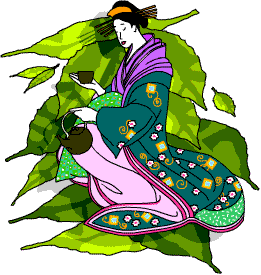Green Tea
Created | Updated Sep 3, 2014

Green tea is a fairly popular drink in the Far East and is gradually making itself known in Europe, the Americas, and the rest of the world. What separates green tea from black tea is not just the colour of the tea leaves and the colour of the beverage produced from the tea leaves but also their production, health benefits and brewing methods.
While the Western world learned of black tea from India, green tea largely remained an Oriental drink known only to the Chinese, Japanese, Koreans, Vietnamese, and other Far Eastern cultures. This is due to several reasons:
Taste and tampering: While black tea is generally sweetened and its taste is altered by the addition of items such as lemon or milk, green tea's taste cannot be easily altered - its unique taste makes any tampering a risky experiment and will probably cause the 'taster' considerable displeasure.
Processing: Unlike black tea which is usually sold in tea bags that many people brew with water and finish in a matter of minutes, green tea requires more attention: the attention usually accorded by the British towards tea. Not only does the brewing of green tea require an attention to detail that the majority of today's population cannot afford, but the harvesting, washing, drying, and processing of the tea leaves themselves is a delicate affair. It is widely believed among experts of tea that picking certain tea leaves must be done at certain times. If tea leaves are harvested too early or too late, it would affect the quality of the tea. Again, attention to detail is very important. Some tea leaves can only be harvested at dawn and others at dusk and still others at other times of the day. The drying of tea leaves is generally not recommended unless it is necessary (for storage or transportation purposes). Freshly picked tea leaves should be used as soon as possible to preserve their taste. These are just examples of how delicate the processing of high-quality green tea can be.
Due to the widespread trend of industrialisation, the processing of tea leaves has become increasingly delegated to machinery. However, high quality tea leaves are still gathered by hand and, in the Orient, competitions between tea producers are still being held on a regular basis with winners gaining prestige and hefty payments in terms of the rewards and the customers that the new-found prestige will bring. High quality green tea is a rare and valuable commodity. High quality green tea leaves can be wrapped in beautifully drawn bags whose air has been removed in order to preserve the taste.
Unlike black tea which is almost infinitely adaptable to human experimentation, the preparation of green tea must follow a relatively strict procedure to guarantee optimum taste. Green tea should only be drunk while it's hot. It should never be drunk if it was brewed more than 24 hours ago.
The tea industry extends far beyond the growing, harvesting, and sale of tea. Due to the attention paid to green tea, the equipment used to brew tea has become and important segment of the industry as well. For more than a millennium, Eastern artists and craftsman continued to produce tea pots and cups with magnificent illustrations so that their owners can marvel at their beauty while taking a sip.
The health benefits of green tea are debated. But a range of studies suggest that it can contribute to the prevention and the alleviation of cancer. It can also help obesity-related disorders. Unfortunately, studies done on green tea are still incomplete and sometimes produce contradictory results. However, the generally health-conscious Japanese swear by it and this alone seems to be a good indication of its health-promoting properties.

